Harold Davis's Blog, page 193
November 19, 2013
Yunomine Onsen
Yunomine Onsen is an ancient spa town in the middle of Kumano kodo territory. A hot creek runs down the middle of the town next to the road; you can see an old stone bridge crossing the thermal creek in the photo below.

Yunomine Onsen © Harold Davis
Onsen means bath, which in Japan is usually a communal affair. In Yunomine Onsen there are public hot springs—you pay a small admission fee—and private hot springs associated with individual guesthouses. Most of the guesthouses have traditional gender-segregated bath houses in addition to the hot springs. It’s amazing to think that pilgrims have been enjoying the restorative properties of these thermal springs for literally thousands of years.

November 15, 2013
Misty Mountains
At 6AM my iPhone alarm rang. I raised my head off the futon, pulled the screen aside, and peered out the window at a world of driving rain. Yunomine Onsen is a country hot spring resort, so before starting up the trail I took a nice long soak, figuring as long as I was going to be wet, I might as well be warm AND wet.
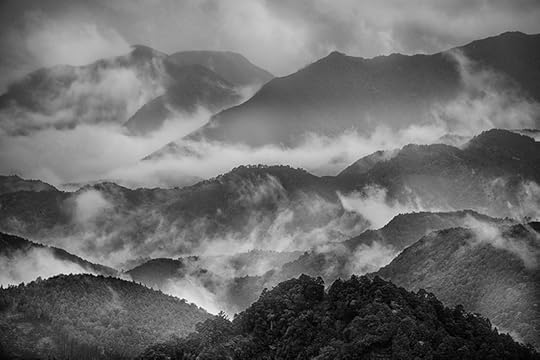
Misty Mountains © Harold Davis
Pack cover in place and umbrella in hand I started up the trail. At first the rain was heavy, then it subsided to a constant pitter-patter in the trees. Walking on a trail in the rain is fun, but it does lead to melancholy reflections, particularly when you pass settlements that were abandoned hundreds of years ago, as is often the case on the Kumano kodo.
Soon the trail started climbing towards a high pass, and I was blessed with a distant view of misty mountains as the storm began to clear.

November 14, 2013
Temple Dragon
The end of the day’s walking on the trail was at the Kumano Hongu Taisha. This temple has been the center of the Kumano Shugendo faith for over a millennia. Coming into the temple complex, I saw this dragon presiding over place for ritual purification. You take the scoop of water with your right hand and rinse your left hand. Next, with the scooper in your left hand you rinse the right. You take a bit of water in your mouth, but don’t drink it, and don’t spit it back into the water source. Finally, you rinse the scooper’s handle, clap twice, and bow. The dragon is here to make sure you get the steps right!
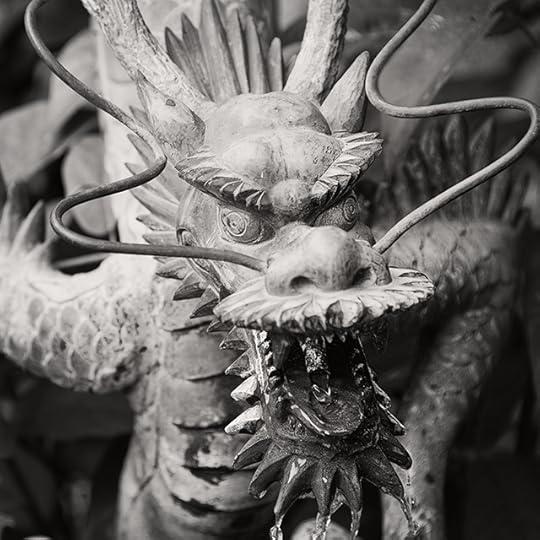
Temple Dragon © Harold Davis

November 13, 2013
Dawn in the High Fields
Early morning light coming through the Shoji screens woke me. I opened the screen and stared out at a chill world with fog hanging in the distant valleys. This was no time to dawdle indoors! I threw on my clothes, grabbed camera and tripod, and headed out to make photos.
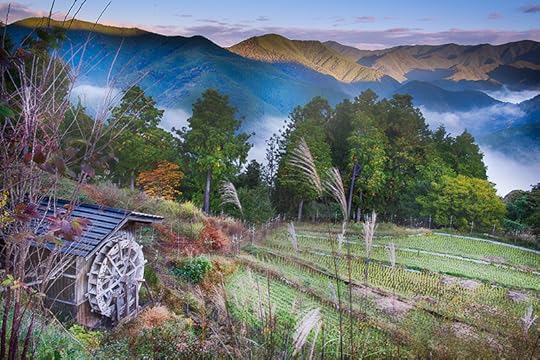
Dawn in the High Fields (Takahara Village) © Harold Davis
Later, the hot communal bath would wash away my cold. Breakfast was many dishes. I could identify the smoked salmon, but others remained a mystery. Then, with pack on my back, I headed out into autumn to head along the trail to the next village.

November 12, 2013
Mt Koyo
Getting to Mt Koyo from Nara took a taxi, two different trains, a cable car, and a bus. Mt Koyo itself is kind of like Arlington National Cemetery and Westminster Abbey rolled into one, a bit more user-friendly than either—there’s real popular connection to the cemetaries and temples in the park here—and bordered by a resort town. People come to this place on pilgrimage, but it is also kind of a place to play.
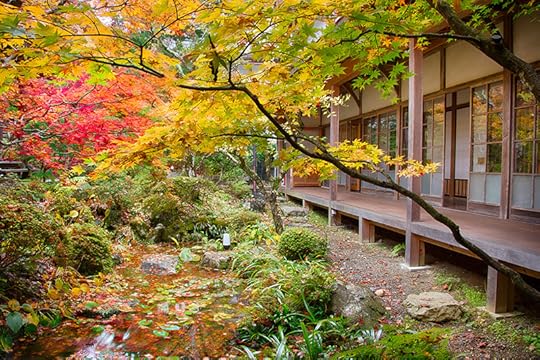
Shukubu Ekoin © Harold Davis
I am staying in a temple guesthouse for pilgrims. In many ways it is very nice. This kind of place is called a Shukubu. Combining things that are more in my normal experience in order to describe it, it is part youth hostel and part resort hotel, with everyone sleeping on the floor in rooms divided by paper screen partitions, guided meditations morning and night, and pretty gardens.
A cold rain has been falling for most of the day, and the trick has been to stay warm and dry. Paper walls do not make for great insulation! If you are interested, this Shukubu heats with kerosene (yes, it smells bad), and also with a secret electric heater under the low table for one’s feet. I hope the rain stops by tomorrow when I will be walking on the Kumano kodo trail!

On the Kumano Kodo
I am hiking on the Kumano kodo at last. It seems like a long time ago that I started planning this trip. Amazingly, everything is working. To get to the trailhead from Mt Koyo, I took a bus, a cable car, three trains, and another bus. This first night I am staying in a country guesthouse in a village named Takahara—or “high fields” in English. The inn hangs high above a valley, and maybe tomorrow morning will have fog and clouds caressing the mountains and clinging to the valleys.
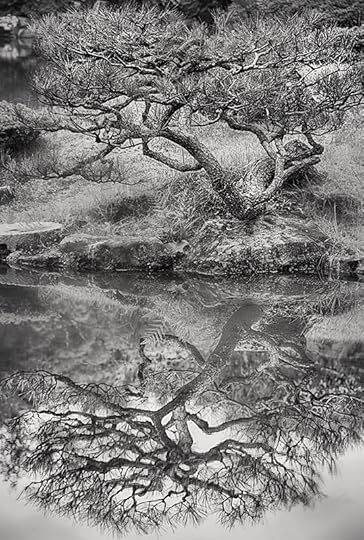
Tree and Reflection © Harold Davis
It was a reasonably tough ascent to get here, over old gnarled tree roots and a rocky path that has been trod by pilgrims for literally millennia. Every once in a while a shrine or a marker reminded me of the history. The topography is steep, with erratic ups and downs, and a chill autumn wind helped make sure that I did not tarry too much. Fortunately, here in Takahara I have dinner, a warm bed, and a hot communal bath. Ah, joy indeed for the distance hiker!

November 10, 2013
Of Deer and Men
There are many things both old and new to be seen when wandering Nara, Japan. I particularly liked the gardens and temples. But oddest of all are the tame deer wandering everywhere. These are not like our deer, they are Cervus nippon, a long-haired species.

Isuien Garden © Harold Davis
The icon-based signs warn tourists in Japanese and pictures that the deer are wild animals. They may butt, bite, and are unpredictable. This wildness is questionable—the deer are subsidized, and largely subsist on “deer cakes” purchased by visitors. I don’t doubt they are capable of taking a nip out of one, but this doesn’t inhibit anyone from trying to get a photo with their little one astride—or kissing—a deer.
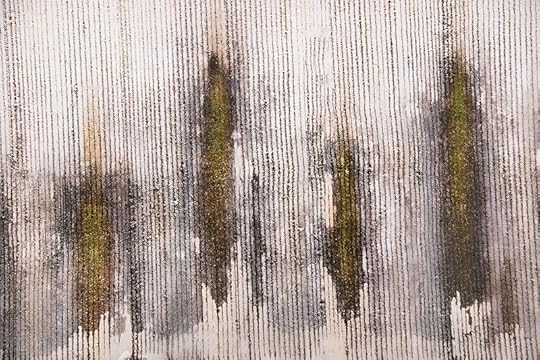
Garden Wall, Nara, Japan © Harold Davis
I don’t get the sense that these deer are the sharpest animals in the animal toolkit. Maybe that is what millennia of partial domesticity does for you. They seem to amble around all over the place, for the most part amiably, pooping and trying to schnorr from visitors anytime they see anything they think might be edible. Trust me, deers, my camera is not food!

November 9, 2013
Coming into Nara
I took a casual inter-urban train from Kyoto to Nara. The ride was about an hour. Nara is a city with ancient roots—it was an imperial capital before Kyoto, and that means going back at least a thousand years. But like Kyoto and the other Japanese cities I’ve seen so far on this trip the outskirts and areas around the train station are all too modern, with grim high-rise blocks extending in every direction.
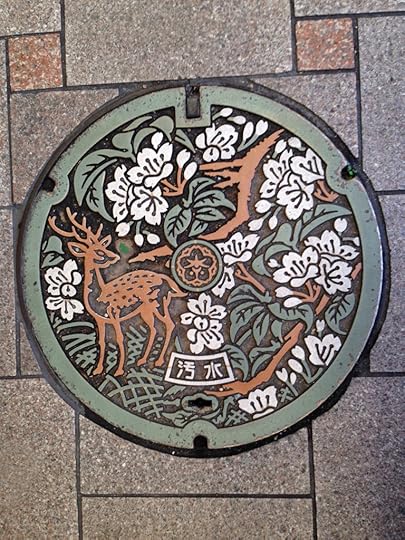
Nara Manhole Cover (via iPhone) © Harold Davis
After passing through the train station gates, Nara Station feeds seamlessly into a multi-story department store. The ground floor cafeteria is called La Vie Francais, and serves what is called French food—definitely tasty stuff, and inexpensive enough, but not like any French food I’ve ever seen before. I had a kind of chorizo sandwich on a bun, and an orange-flavored croissant with a swirl pattern in the dough.
My travel agent said the Ryokan where I was staying was about a fifteen minute walk from the train station. Unfortunately, the directions weren’t very good—and the distance was several kilometers. Not being Lightning McQueen, I took an hour or two to get lost, ask directions, get lost again, and so on. The iPhone shot above is of a decorative manhole cover I passed on my way. The cities may be crowded but many touches are simply pretty!

Garden at the Sakuraya © Harold Davis
Finding the Sakuraya Guesthouse made the schlepp from the train station worthwhile. This is an old-style 150 year old building in old Nara, a quiet and quaint area of alleys, shops, and ancient buildings. And I was welcomed with extraordinary courtesy and grace. Now on to explore Nara!

November 8, 2013
Sayonara Kyoto
It is with sadness that I leave Kyoto behind. I hope I come back soon to this mysterious city (both ancient and peculiarly modern)—so I can learn more of its secrets, and spend more time photographing its beauty.

Gion at Night © Harold Davis

November 7, 2013
Getting lost is good
Getting lost can be frightening, and at the least provokes anxiety. But getting lost can be good because it compels one in adventures and directions one would not have undertaken otherwise.

Bamboo Forest © Harold Davis
Take today. Normally, I am pretty good with maps, and have a good sense of direction. But there is something about being a functional illiterate in Japan that keeps throwing me when I try to read the maps. Either that, or the maps are intentionally confounding. But let’s face it, Kyoto has maze-like aspects in any case.
Getting back to today, it was supposed to rain. So I started out by exploring the Kyoto Nishiki food market. As Chris Rowthorn, the author of the Lonely Planet guide to Kyoto puts it, “There is something strangely enjoyable about touring a food market where over half the goods on display are utterly baffling (is it a food, a spice, or some sort of Christmas tree decoration?)”
By the time I left the covered Nishiki Market it had started to rain lightly. I walked over to the Hankyu Kyoto train line station, planning to change to the Keifuku Arashiyama Line, with a last stop near temples and the Bamboo Forest. I checked with the nice man overseeing the gate to make sure I was going the right way, he even pointed to the track for me.
As it happens, the train on the track was an express, and before I knew it we had zoomed across the Katsuragawa River, and were rushing away from central Kyoto. Since the rain had turned into a downpour I figured that being on a train wasn’t so bad, but I was definitely in the process of getting lost.
To make a longish story short, I got off at the first stop the express came to, and with the help of some nice youths wearing some kind of uniform took a different train route up the west side of the Katsuragawa River on the local Hankyu-Arashiyama Line. The hard rain had stopped, and the landscape was fresh and moist.
I was off my map, beyond metropolitan Kyoto, and I after the last train stop I had to cross a bridge onto an island, walk up the island, and cross another bridge. Not so hard, because I was following the crowds.
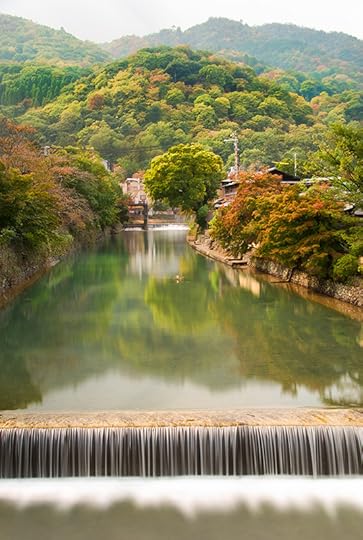
Katsuragawa River © Harold Davis
Did I mention they have lots of crowds here, and lots of festivals as well? I had a great deal of fun being lost and getting found, and snacking my way from the Arashiyama street stalls.
When I got there I found that the Bamboo Forest is more path than forest, with taxis, rickshaws, couples being photographed in wedding dress and tux, and plenty of tourists and well as locals, with a loud train line running nearby. It was quite beautiful anyhow.




